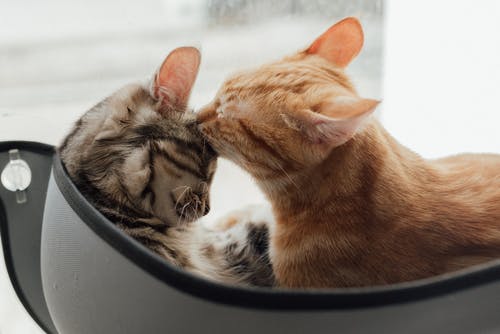
The Benefits of C-Sections for Pets: How This Procedure Can Save Your Fur Baby’s Life
July 22, 2023For many pet owners, the idea of a C-section – or cesarean section – for their beloved fur baby might sound foreign or daunting. But did you know that the benefits of C-sections for pets can ultimately save their lives? In this article, we’ll dive into the advantages of this life-saving procedure, along with instances where it becomes a necessity, and some touching success stories. Let’s get started!
I. The Advantages of C-Sections in Pets
Just as with humans, a C-section procedure can provide several benefits for animals facing complications during labor. Here are some key advantages:
A. The Ability to Save Pets When Natural Birth is Impossible
When a pet’s labor proves to be too difficult or dangerous for the mother and her babies, a C-section can be the key to saving their lives. This surgical intervention ensures that the baby animals are safely delivered without subjecting the mother to prolonged, agonizing labor.
B. Prevention of Physical Trauma for the Mother and Babies
A C-section can help prevent physical trauma to both the mother and her babies. Some pet breeds are prone to having difficulties during natural birth due to their anatomy, leading to potential injury or complications. In such cases, a C-section can make the delivery process safer and less traumatic for all involved.
C. Reduction of Stress and Anxiety During Difficult Labor
The distress of a pet during a complicated labor can be upsetting for both the animal and its owner. By opting for a timely C-section, much of the stress and anxiety associated with a challenging delivery can be alleviated.
II. Common Reasons for Pet C-Sections
There are several reasons why a pet might require a C-section, including:
A. Breeds Predisposed to C-Sections
Some breed types, such as English Bulldogs and certain cats like the Persian or Himalayan, may require a C-section due to their unique physical attributes. For instance, their heads may be too large to pass through the birth canal, making normal labor impossible.
B. Health Complications During Pregnancy or Labor
Medical issues that arise during a pet’s pregnancy or labor can necessitate a C-section. Examples include gestational diabetes, high blood pressure, or complications with the baby.
C. Difficult Positioning of Babies in the Womb
If a baby is not positioned correctly in the womb, the delivery may prove to be too difficult or impossible, in which case a C-section may become necessary.
III. Canine C-Sections
Canine C-sections can occur for various reasons. Sometimes, the mother dog might suffer from a condition that prevents her from successfully completing a natural birth. In other cases, a dog’s anatomy or the size and position of the puppies can make a C-section the safest option for delivery. Regardless of the circumstances, it’s essential to have your pet examined by a professional who can determine the best course of action.
One popular service that offers canine C-section expertise is the https://www.americanpetclinic.com/site/veterinary-services-ceres/c-sections. These experts are experienced in managing C-sections for dogs, ensuring the best possible outcome for your furry friend and her litter.
IV. Feline C-Sections
Feline C-sections, like canine C-sections, can be lifesaving for both the mother cat and her kittens. Complications during pregnancy or labor can affect a cat’s ability to complete a natural birth. Additionally, specific cat breeds may be more prone to requiring C-sections due to anatomical or genetic factors.
In feline C-section cases, it’s crucial to seek the advice and assistance of a qualified veterinarian. Not only do they possess the knowledge and skills necessary for performing a successful C-section, but they can also provide guidance on how to care for your cat and her babies post-operation.
V. C-Section Procedure and Recovery
Just like any surgical procedure, a pet C-section needs to be performed by a skilled and experienced veterinarian. After surgery, your pet will require careful postoperative care and monitoring. It’s essential to follow your vet’s instructions and provide a clean, safe, and comfortable environment for your recovering pet as she bonds with her newborns.
If you believe your pet may be in need of a C-section, it’s crucial to seek the assistance of an emergency vet near Ceres, CA. An emergency veterinarian can quickly assess the situation and determine the best course of action for your pet and her babies’ well-being.
VI. Preventive Measures to Reduce the Chances of Needing a C-Section
While a C-section is a valuable tool to protect both mother pet and her babies, there are preventive measures pet owners can take to minimize the need for this surgery:
A. Responsible Breeding Practices
By carefully selecting partners for your pet and ensuring your animal is in good health before mating, you can reduce the risk of having to undergo a C-section.
B. Timely Veterinary Care and Monitoring During Pregnancy
Regular check-ups and prenatal care can help identify potential complications early, allowing you and your vet to tackle them before they escalate to a point where a C-section becomes necessary.
C. Knowing When to Intervene During Labor
In some situations, monitoring labor progression and seeking veterinary assistance when signs of distress or complications arise can help prevent the need for a C-section.
VII. Weighing the Pros and Cons of C-Sections in Pets
Taking into account both the benefits and potential risks of C-sections is essential in making an informed decision for your pet’s well-being. Expert guidance from a trusted veterinarian is invaluable in helping pet owners navigate this decision-making process.
Conclusion
Understanding the benefits of C-sections for pets, how this life-saving procedure can be conducted, as well as preventative measures and postoperative care, is essential for pet owners. By being informed and working with experienced veterinary professionals, you can ensure the best outcome for your furry family member and her newborns.




